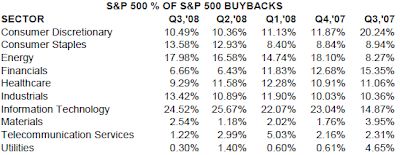(I orginally posted this article on The DIV-Net website.)
I have written a couple of articles in the past on on the benefits of reviewing a company's ROE or return on equity. One benefit of this measure is the resulting ROE calculation provides an investor with insight into management's use of capital. In general, higher ROE's point to better managed companies.
One danger looking solely at ROE is the ability of leverage (debt) to overstate ROE. In 2006, Bear Stearns' ROE was over 19% and this was an increase over the prior years ROE of 16%. What occurs is any debt taken on by a company reduces the equity figure. Since the ROE calculation is essentially net income divided by equity, a higher ROE would result for a company that uses debt versus equity to finance its operations. An example:
If you buy a house for $100,000 and borrow $50,000 to buy it, you have 50 percent debt and 50 percent equity in the home. Say the home is worth $110,000 a year later (this really is a hypothetical situation, isn’t it?). Your ROE is 20 percent: the $10,000 gain is divided by $50,000 in equity.
Now let’s say instead that you borrowed $75,000 to buy the home. The ROE would be 40 percent: $10,000 divided by $25,000 in equity. You’ve taken on more debt, but the results look more impressive.
Additionally, interest on debt (as compared to dividends) receives favorable tax treatment as well. The interest is deducted from a company's income before determining the level of taxes owed. On the other hand, dividends are paid out of net income and a company does not receive a tax deduction for the dividends that are paid. A company can enhance its ROE by using debt so long as the cost of the borrowing is less than the company's ROE.
Another way to calculate ROE is to use the DuPont Model. The DuPont Model formula is:
ROE = Net Profit Margin x Total Asset Turnover x Financial Leverage
- Net Profit Margin = Net Income/Net Sales
- Total Asset Turnover = Net Sales/Total Assets
- Financial Leverage = Total Assets/Total Equity
The DuPont formula enables one to see more directly what is driving the increase in ROE.
As an investor analyzes a company and its ROE, it is important to know what is influencing the ratio. A high ROE in and of itself does not necessarily imply a strong management team or ongoing viability of the company.
Source:
Checking for Bloated ROE ($)
BetterInvesting Magazine
By: Michael Maiello
January 2009
http://www.betterinvesting.org/Public/Store/Store/Membership/default.htm



















